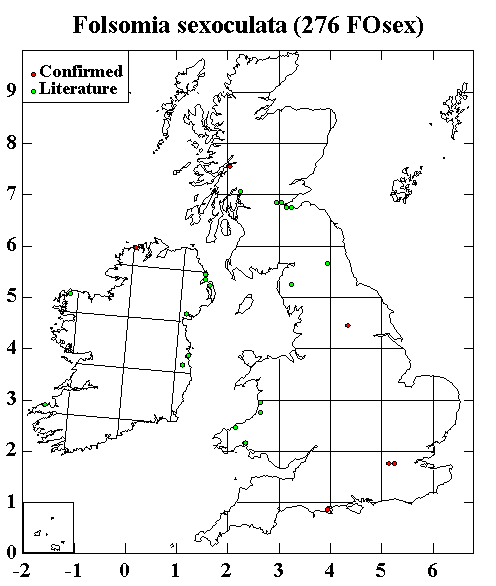|
Folsomia sexoculata is a common species which is usually found in the littoral zone or the margins of tidal rivers and estuaries (e.g. Kew). However, there are a few inland records from the margins of freshwater lakes and streams such as Derwentwater in the Lake District and Harewood Bridge in Yorkshire (it is possible that these could represent another possibly undescribed species).
Folsomia sexoculata is blackish-grey and has 3+3 ocelli (2 close together near the PAO and one clearly separate on each side of the head; Figs. 1, 2). It reaches a maximum length of 2.5 mm. The body setae are short; the ratio of the length of the longest setae at the tip of the abdomen/length of mucro is between 2.0 and 2.5. In the specimens I have seen, the manubrium has 2+1, 2+2, 2+3 or 3+3 apical ventral (anterior) setae (e.g. Fig. 3). The dens has 13-17 ventral (anterior) setae and 6 dorsal (posterior) setae (4 at the base of the dens and 2 in the mid region). The post-antennal organ (PAO) is narrow and is shorter than the width of ant1 (Fig. 1).
Unfortunately the condition of many of the specimens in the NHML collection is poor and although the 3+3 ocelli can be discerned, many features are difficult to resolve. However, I am certain that Folsomia thalassophila is not a junior synonym of Folsomia sexoculata. The most important difference is the ratio of the length of the longest setae at the tip of the abdomen/length of mucro. As mentioned above, in Folsomia sexoculata this is never more than 2.5 whereas in Folsomia thalassophila the ratio is between 3.0 and 3.8. I have seen mature males and females of both species.
Back to main page
|
|







